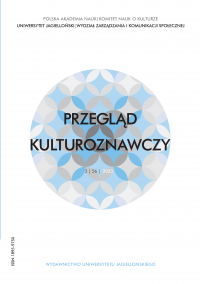Żywe archiwum. Więcej-niż-ludzkie obecności w siedliskach ruderalnych
The Living Archive. More-Than-Human Presences in Ruderal Habitats
Author(s): Martyna DziadekSubject(s): History, Social Sciences, Cultural history, Sociology, Social development, Human Ecology, Sociobiology, Sociology of Culture, Sociology of the arts, business, education, Environmental interactions
Published by: Wydawnictwo Uniwersytetu Jagiellońskiego
Keywords: plant studies; living archive; environmental history; biohistory; ruderal ecologies; prospective ruination;
Summary/Abstract: Ruderal ecologies can be regarded as places where more-than-human actants start to operate. In this article, places abandoned by a man, are called “prospective ruination” to emphasize the verb of decomposition function and to reorient the cognitive perspective of decay into the future, understood as a new human and more-than-human ruderal assemblages of culture-natures. The author of this text truly believes, that providing this kind of view, expands the Polish imaginary related to the rubble, reorienting the perspective of decay, to the vibrant more-than-human agencies and forces. The subject of the research reflection on ruderal ecologies (Caitlin DeSilvey), which constitute a. living archive, is Karolina Grzywnowicz’s project Weeds exhibited in 2015 at Zachęta in Warsaw. By introducing the term “biomnemonic witness” (gr. Mnemosyne, goodness of memory), the author emphasizes the subjectivity of the plant kingdom and its floral agencies in creating cultural and biological entanglements. The coda of the sketch problematizes the notion of a living archive and determines the trajectory of getting out of the anthropocentric cognitive impasse.
Journal: Przegląd Kulturoznawczy
- Issue Year: 56/2023
- Issue No: 2
- Page Range: 163-175
- Page Count: 13
- Language: Polish

